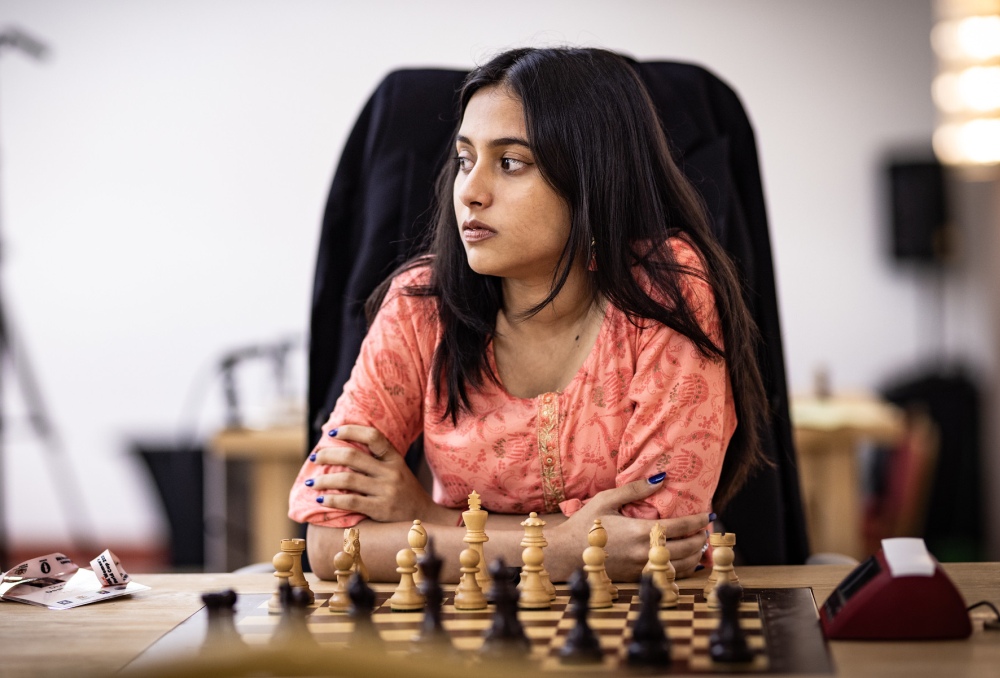
The semi-finals are set: Lei Tingjie vs Humpy Koneru and Tan Zhongyi vs Divya Deshmukh
Divya Deshmukh, the young IMfrom Nagpur, Maharashtra, continued her remarkable rise in the world of chess with a stunning victory over GM Harika Dronavalli in Batumi. In a tense rapid tiebreak, Divya secured a clean 2-0 win, eliminating one of India’s most experienced players and advancing to the semi-finals.
With this victory, Divya joins her compatriot GM Humpy Koneru and Chinese top seeds GM Lei Tingjie and GM Tan Zhongyi in the final four. The semi-finals, set to be held at the Grand Bellagio venue starting tomorrow, will determine the three players who will qualify for the prestigious Women’s Candidates Tournament. They will join GM Alexandra Goryachkina and GM Zhu Jiner, who have already secured their spots via the Women’s Grand Prix.
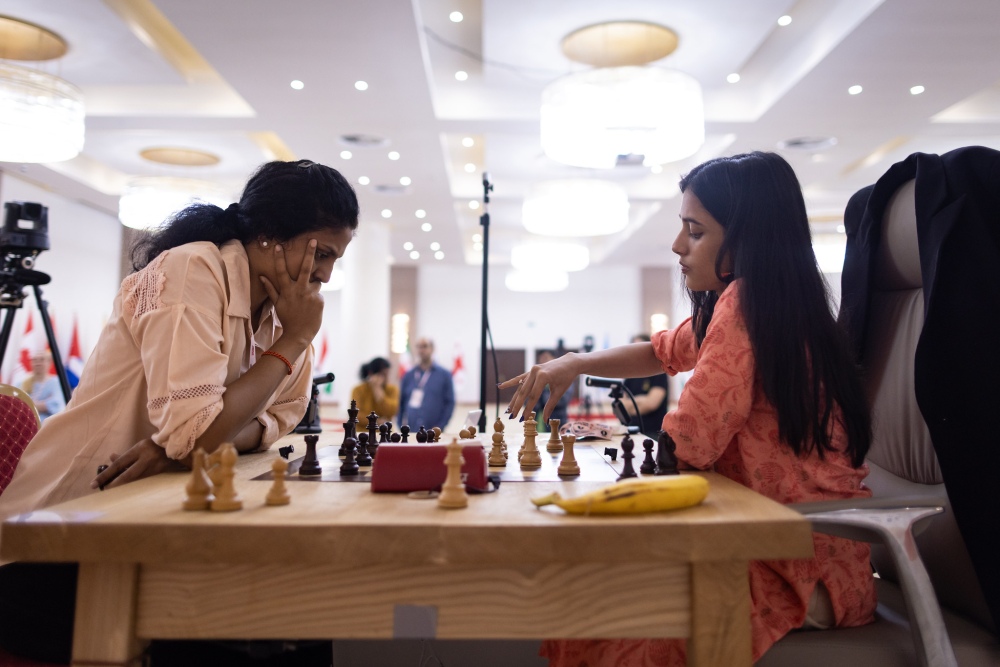
Divya will face former Women’s World Champion Tan Zhongyi in her semi-final match, while Humpy Koneru takes on Lei Tingjie in the other India vs China clash — a testament to the formidable strength both nations bring to the women’s chess circuit.
Speaking on stage moments after Harika’s resignation, FIDE’s WIM Charlize van Zyl caught up with Divya, who was still visibly emotional. Reflecting on her performance, she said honestly, “I think I’m happy with the way I played, but I don’t think the second game went very well.”

As the tournament enters its decisive stage, Divya Deshmukh’s breakthrough performance signals a generational shift in Indian chess. With youth, composure, and a fearless approach, she is proving to be a serious contender on the world stage — and perhaps a future challenger for the Women’s World Championship title.
Let’s take a closer look at the games:
In the first 15|10 rapid game, Divya targeted one of the lines that Harika plays quite often—the Classical Italian, Greco Gambit. Both players blitzed out their opening moves, showcasing excellent preparation.
“The preparation has had a lot to say in this game, and I would like to thank my coach for that,” explained Divya in her post-game interview.
In fact, Harika had played the exact same position—though with reversed colours—against Goryachkina in a 2021 tournament, so she was clearly familiar with the nuances of the line.
However, things started to go wrong for Harika around move 22.
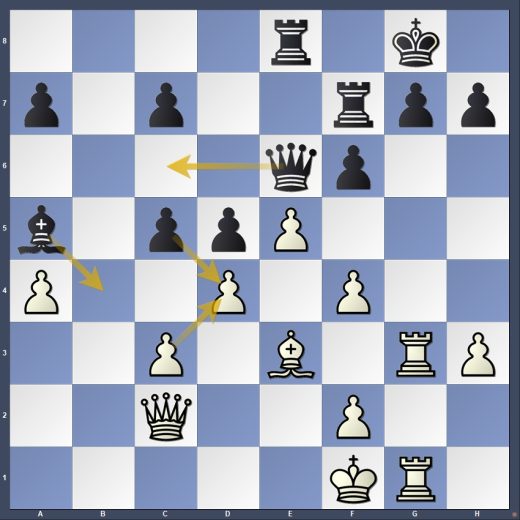
The position was approximately equal, and a good sequence for Black would have been:
22…cxd4 23.cxd4 Bb4! — regrouping the bishop to f8, reinforcing the light-square defence.
Instead, Harika went astray with 22…Qc6?, allowing Divya to grab a crucial pawn with 23.dxc5! dxe5 24.fxe5, leading to a critical turning point.
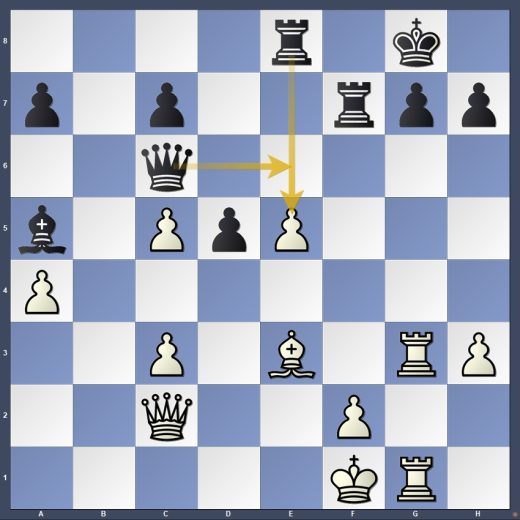
Though White was a pawn up, her shattered pawn structure meant Black still had drawing chances—especially with a solid move like 24…Qe6, aiming to control the light squares.
But Harika blundered again with 24…Rxe5?, allowing Divya to activate her pieces decisively. She placed her bishop on d4, bringing tremendous pressure on Harika’s king.
A few moves later, Divya struck gold with a brilliant tactical sequence.
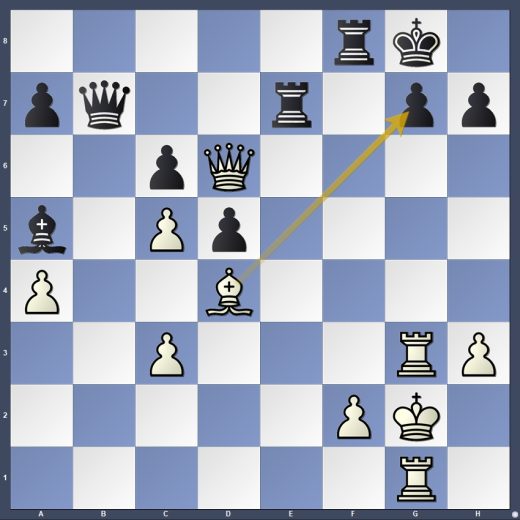
She played the stunning 30.Bxg7! Rxg7 31.Rxg7 Qxg7, and now calmly followed up with 32.Kf1!, winning the queen for just a rook and a bishop.
“I initially thought the combination wasn’t working because of 31…Kxg7, but then I found the idea with 32.Qf4 and saw that it was OK,” she explained after the game.
There was still some technical work to do, but Divya converted her advantage with confidence and precision.
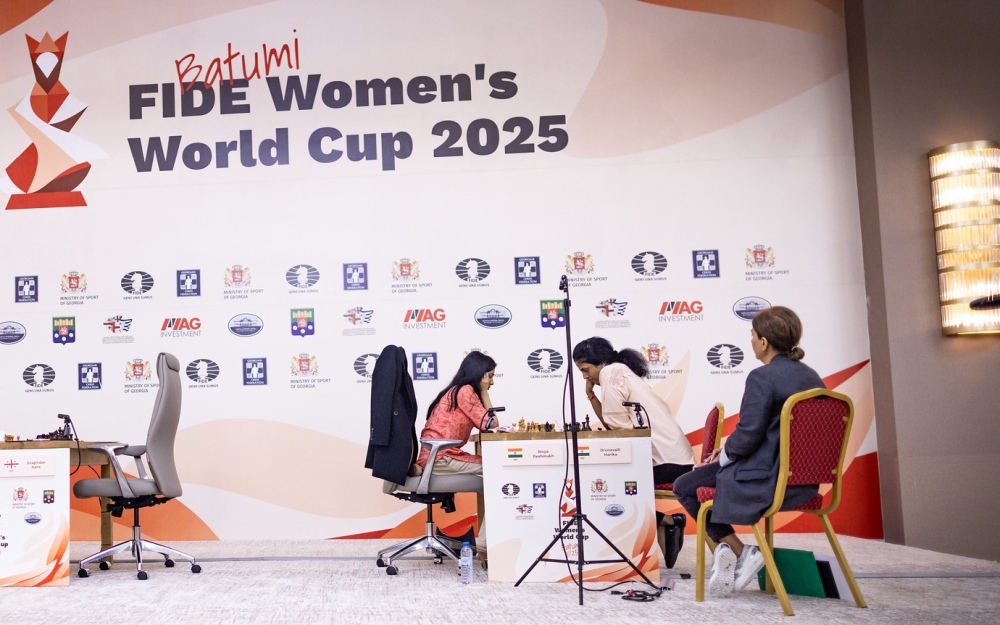
Going into the second 15/10 game, Harika was forced to win with White to remain in contention. Her opening choice, a King’s Indian Attack, with an early exchange of queens, suits her positional style, but excellent technique is needed to grind a win from such positions.
Harika was doing well – going out of the opening, she might have missed a chance in the following position:
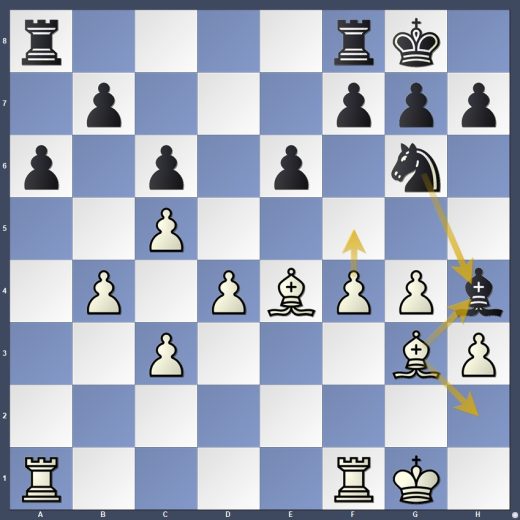
Divya was doing her best to exchange every piece she could – a draw would secure her spot in the semi-finals. Here Harika went 22.Bh2, understandably trying to keep as many pieces on the board as possible, in this case the bishop pair.
However, the engine suggests that the best option would have been 22.Bxh4! Nxh4 and now 23.f5!, in an attempt to isolate the knight out of the game.
Having missed this opportunity, Divya rerouted the knight to the strong d5 square and construct a fortress. From then onwards Divya kept the position in balance, and it seemed a draw was going to be the most likely outcome. But low on time, Divya blundered, allowing Harika her final opportunity.
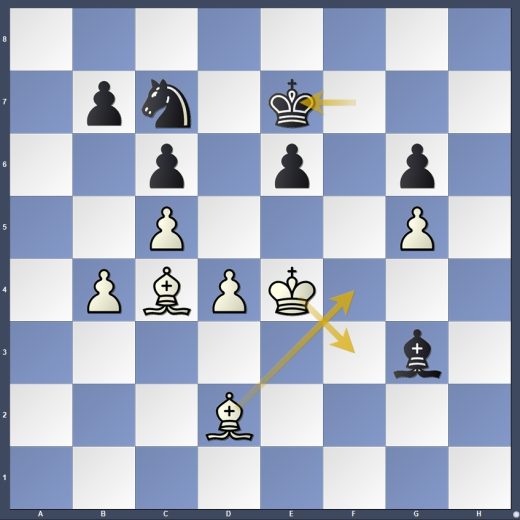
Instead of 63.Kf3?, which is a draw, Harika should have played 63.Bf4! (first on move 61 in a slightly different position) and after 63…Bxf4 (forced) 64.Kxf4, the king penetrates to e5 while the bishop goes to d3 – there is no way that Black can hold this ending with so many weaknesses.
After missing this opportunity, Harika’s confidence was broken, and a few moves later she blundered a pawn and the game.
“Zhu Jiner was definitely my toughest opponent up to now and winning the tiebreak against her gave me confidence for this one. I didn’t want to play tiebreaks but this is my fate, and for the moment it’s going well” were Divya’s final words.
Written by IM Michael Rahal (Batumi, Georgia)
Photos: Anna Shtourman
About the tournament:
Scheduled to take place from July 6th to July 28th, the 2025 FIDE Women’s World Cup will gather together in Batumi (Georgia) the world’s best female chess players. A total of 107 players from 46 different federations are set to participate in the event, including seventeen of the current top twenty!
Chess legends, seasoned professionals and emerging talents will play for the $50,000 first prize, in addition to three qualifying spots for the Candidates.
The full pairings tree and day-by-day results can be found on the Women’s World Cup website.


